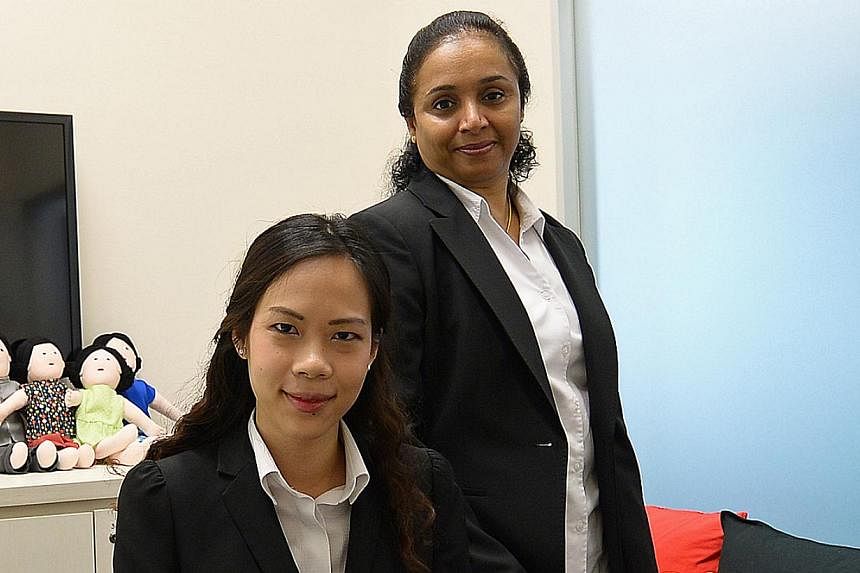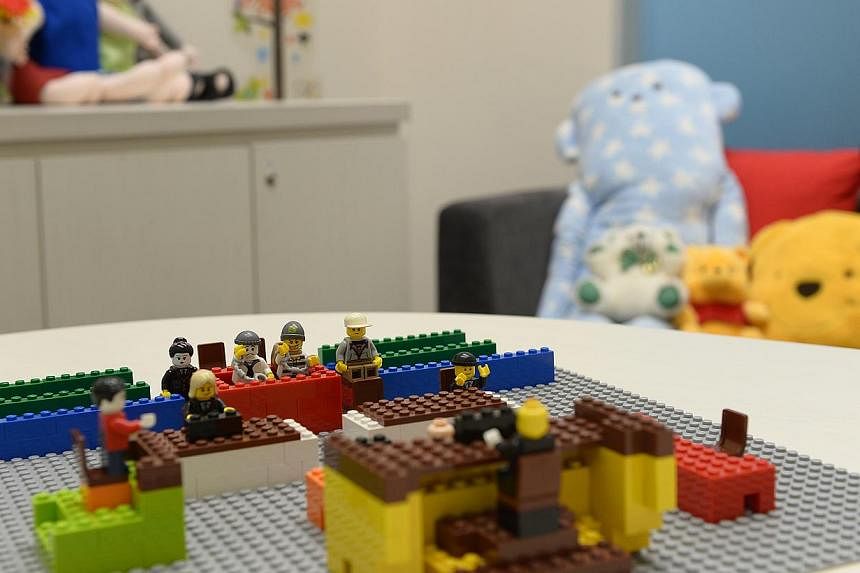The rape victim, 10, climbs onto a sofa and hugs one of the soft toys on it, unsure of what to do next.
She is at the Attorney-General's Chambers (AGC) in Upper Pickering Street, preparing to recount her horrific experience.
When prompted, she clings tighter to the toy but begins to talk, and her testimony gives prosecutors the ammunition they need to go to trial.
But building a bond with young children who are traumatised - and getting them to talk - is not easy, said prosecutors.
And the special room, set up to make them feel as secure as possible, has worked wonders.
Prosecutor Carene Poh, 25, said: "The setting of the room helps the child to relax."
So far, 35 people, mainly children and disabled adults, have used the Vulnerable Witness Room, as it is called, since it opened in September last year.
With more difficult interviewees, prosecutors can use props such as toys and drawings to draw them out.
Furnished at $1,500, the room has anatomically correct dolls - whose clothes can be removed to reveal their genitals - for those who find it difficult to express themselves verbally. A 3D model of a courtroom made of Lego blocks helps children understand how proceedings work.
"We can use the Lego toys to establish a rapport with the witnesses when we interview them. Sometimes, we also let the kids play with them," said Ms Poh.
"In this way, they feel we can empathise with them better because we are talking to them with something that they can relate to," she added.
The room, with beige walls adorned with colourful paintings by children, framed artwork, potted plastic plants, aromatherapy humidifier and a box of tissues within arm's reach, is a far cry from the regular offices where children were questioned before.
Previously, at the old AGC's offices in Coleman Street, question and answer sessions could be much more intimidating, particularly since the children had to walk past multiple cubicles and photocopiers to reach the interview rooms.
Prosecutor N. K. Anitha, 46, said: "I had a young victim who ran back to the reception area. No amount of trying to break the ice could get him to the interview room."
Now, children like him need only pass the reception to get to the 15th floor, where the room is just a few steps away.
Psychiatrist Lim Boon Leng, 38 said that a friendly environment can help a child feel more secure.
"When he is not anxious, he may reveal more," he said.
The room, which is modelled after similar child-friendly facilities overseas, is used about once a week.
And for the first time, the AGC is giving students from secondary schools, junior colleges, polytechnics and the Institute of Technical Education a peek inside the facility. More than 100 of them have visited it this week, as part of the the AGC's Public Prosecution Outreach Programme, aimed at increasing awareness of its work.
During the visit, prosecutors explained a few aspects of their work, such as interviewing witnesses, evaluations, and presenting evidence to prove that the accused person has indeed committed an offence.



